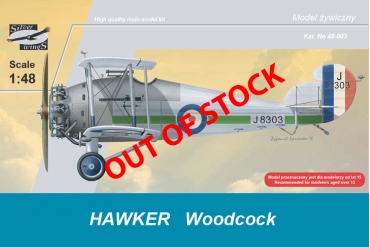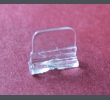Hawker Woodcock
-
 Box
Box
-
 RAF - No. 3 Sqn, Upavon, 1926
RAF - No. 3 Sqn, Upavon, 1926
-
 RAF - No. 17 Sqn, Upavon, 1927
RAF - No. 17 Sqn, Upavon, 1927
History
The first fighter to be produced by Hawker Engineering, the Woodcock was designed by Capt B Thomson to meet Specification 25/22 calling for a single-seat night interceptor fighter. Of wooden construction with fabric skinning, the Woodcock was a two-bay biplane with variable-camber flaps and a 358hp Armstrong Siddeley Jaguar II 14- cylinder radial. Mounting an armament of two 7.7mm Vickers guns, the Woodcock was flown in 1923, but its qualities proved disappointing. Lacking maneuverability , it suffered serious wing flutter and an ineffectual rudder. Several revisions of the vertical tail were undertaken, and the Jaguar engine was replaced by a Bristol Jupiter, but the Woodcock failed to find favor during Martlesham Heath evaluation. Further development was discarded in favor of a thoroughgoing redesign that led to the Woodcock II. The first aircraft to be delivered to the Royal Air Force entered service with No.3 Squadron in May 1925 at RAF Upavon. No.17 Squadron was only other operational squadron with first deliveries being made in March 1926. Once the type’s early structural problems were solved, the Woodcock proved popular with its pilots. It was replaced by the Gloster Gamecock in 1928. However, some Woodcocks were still flying in 1936. In June 1927 a Woodcock II of No.17 Squadron was borrowed by the notable aviator Charles Lindbergh. He used the aircraft to fly back to Paris from London soon after his transatlantic flight in the Spirit of St. Louis.
Technical data:
Length: 7,80 m
Wingspan: 10,57 m
Height: 2,74 m
Wing area: 33,1 m²
Empty weight: 915 kg
Loaded weight: 1354 kg
Power plant: Bristol Jupiter 9-cylinder radial engine, 317 kW (425 hp)
Max speed: 227 km/h
Cruise speed: 166 km/h
Range: 451 km
Service ceiling: 6270 m
Armament: 2x 7,7 mm Vickers machine guns











